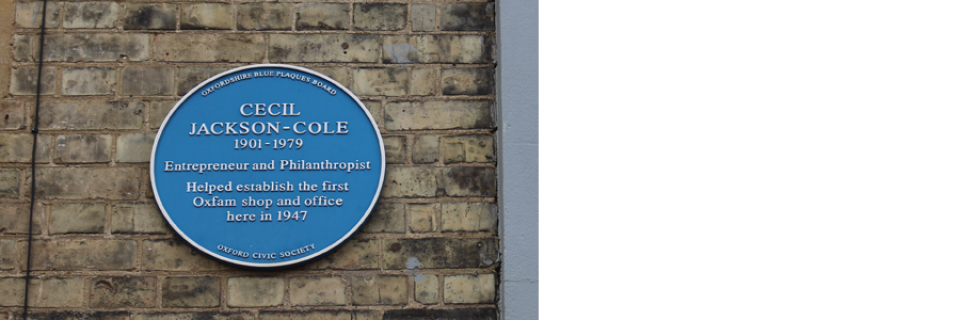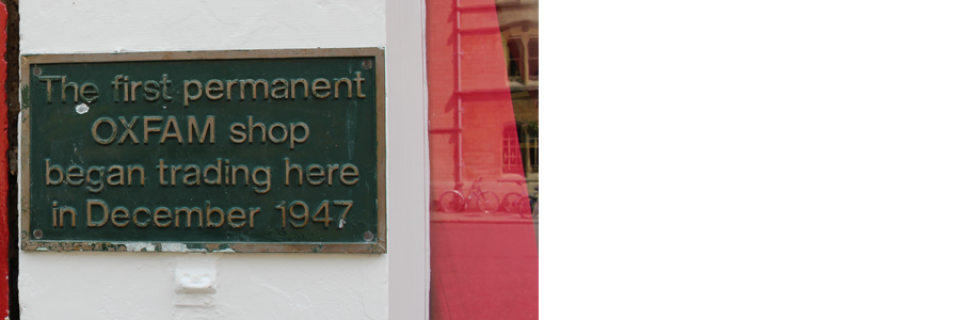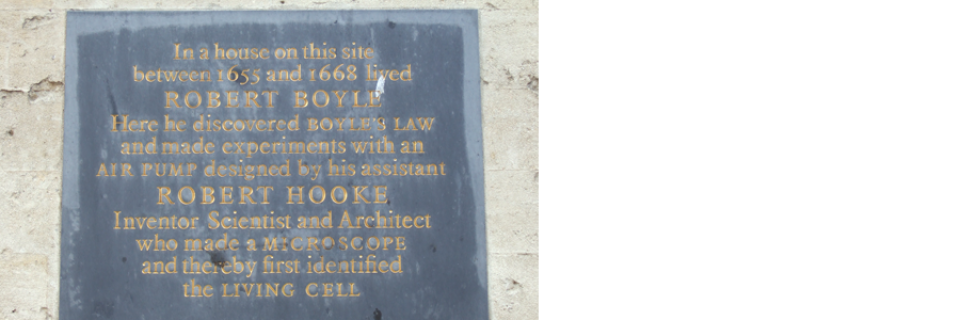Welcome to The Oxford Influenza Conference
**Standard registration deadline extended until 11 September 2017.**
With a major focus on avian influenza this year, the conference promise provided a relaxed, friendly and intellectually-stimulating discussion forum, featuring:
o Emerging and cutting-edge topics addressing most aspects of basic and applied research on zoonotic and human influenza viruses, in particular avian influenza viruses
o Keynote addresses by world leaders in the field of influenza
o Distinguished international faculty comprising senior and junior scientists
o Global participation by scientists from academia, industry and government organisation
o Excellent networking opportunities
Topics of interest:
o Molecular and structural virology
o Immunology and vaccination
o Host-pathogen interaction – virulence and pathogenecity
o Epidemiology and evolution
o National and international surveillance and contingency strategies
o Advances in viral detection and identification technologies
Confirmed Speakers
Speakers and Agenda
(subject to change)
DAY-1: Tuesday, 19th September
1315: Registration and welcome coffee
1405: Welcome and housekeeping
Session 1: Immunology, vaccination and public health – Chair TBA
1415: Professor Alain Townsend (Keynote), University of Oxford, UK
Title: Broadly protective influenza vaccines
1445: Professor Sunetra Gupta, Professor of Theoretical Epidemiology, Department of Zoology, University of Oxford, UK
Title: Using epitopes of limited variability to create a novel influenza vaccine
1515: Dr Xiuhua Lu, Centers for Disease Control and Prevention, USA
Title: Priming with 1977-2007 Influenza A(H1N1) Virus in Humans Shapes Hemagglutinin-Inhibition Antibody Responses to A(H1N1)pdm09 Viruses
1535: Refreshments, networking and posters
1605: Professor James P Stewart, Chair of Molecular Virology, Institute of Infection and Global Health, University of Liverpool, UK
Title: BPIFA1/SPLUNC1 restricts influenza A virus infection by influencing the adaptive immune response
1635: Dr Elma Tchilian, The Pirbright Institute, UK
Title: Varying levels of protection afforded by a candidate Broadly Protective Influenza Vaccine in Pigs and Ferrets
1755: Miss Sofie Starbæk, Graduate Researcher, Technical University of Denmark, Denmark
Title: Effects of low-grade inflammation on influenza virus vaccine responses in Göttingen minipigs
1715: Dr Todd (Charles) Davis, Centers for Disease Control and Prevention, USA
Title: Antigenic Diversity Among Avian Influenza A (H7N9) Viruses during the Fifth Epidemic Wave
1735: Professor Roger Thomas, University of Calgary, Canada
Title: Effects of cold temperatures on increasing the incidence of respiratory infections: Systematic review
1755: Dr Marisa Peyre, Vaccinologist/Epidemiologist, CIRAD, ASTRE (Animal, Health, Territories, Risks and Ecosystems), Montpellier, FRANCE
Title: Tackling health surveillance constraints: the needs for comprehensive evaluation
1825: Close of Day 1
DAY-2: Wednesday, 20th September
Session 2: Virulence, pathogenicity and transmission – Chair TBA
0900: Dr Sophie Morgan, The Pirbright Institute, UK
Title: Transmission Dynamics of Swine Influenza
0920: Dr Xiangjie Sun, Centers for Disease Control and Prevention, USA
Title: Pathogenesis and transmission of antigenically and genetically diverse swine origin A(H3N2)v influenza viruses from multiple lineages isolated in the United States, 2011-2016
0940: Dr El-Sayed Abdelwhab, Head of Avian Influenza Laboratory, Friedrich-Loeffler-Institut; Federal Research Institute for Animal Health, Germany
Title: Paradigm shift: Highly-pathogenic avian influenza virus (HPAIV) of H4N2 subtype. Is it time to revise the OIE-definition for HPAIV in poultry?
1000: Professor Ron AM Fouchier (Keynote Speaker), Professor of Molecular Virology, Erasmus MC, Rotterdam, The Netherlands
Title: Determinants of influenza virus transmission between mammals
1040: Refreshments, networking and posters
Session 3: Molecular genetics and structural biology
1110: Dr Laurence Tiley, Senior Lecturer, Department of Veterinary Medicine, University of Cambridge, UK
Title: Development of an influenza virus replicon transgene to suppresses influenza virus infection in chickens
1140: Dr Svetlana Shcherbik, Centers for Disease Control and Prevention, USA
Title: Replication of A/H1N1pdm09 LAIV reassortants based on Russian donor of attenuation in primary human nasal epithelial cells
1200: Miss Desniwaty Karo-karo, Utrecht University, The Netherlands
Title: Genetic analysis of recent outbreaks (2015-2016) of Highly Pathogenic Avian Influenza A(H5N1) viruses in Indonesian Poultry in West Java
1220: Dr El-Sayed Abdelwhab, Head of Avian Influenza Laboratory, Friedrich-Loeffler-Institut; Federal Research Institute for Animal Health, Germany
Title: Mutations in conserved NA residues of H5N1 naturally isolated from humans modulated sialidase activity and virulence in mice but not in chickens
1240: Professor Jonathan M Grimes, NDM Senior Reseach Fellow & DIAMOND Research Fellow, The Wellcome Trust Centre for Human Genetics, University of Oxford, UK
Title: Structural and functional studies on Influenza virus polymerase
1310: Lunch, networking and posters
Session 4: Epidemiology, surveillance and host-pathogen interaction-I
1410: Professor Ian H Brown (Keynote Speaker), Head of Virology Department & Director of EU/OIE/FAO International Reference Laboratory for Avian Influenza and Newcastle Disease; OIE Reference Laboratory for Swine Influenza, Animal and Plant Health Agency, UK
Title: Global spread of H5N8 HPAI in 2016 leads to the largest AI epizootic in Europe
1450: Professor Oliver Pybus, Professor of Evolution & Infectious Disease, Department of Zoology, University of Oxford, Oxford, UK
Title: The genomic epidemiology of highly-pathogenic avian influenza viruses in Europe and Asia
1520: Dr Nancy Beerens, Senior Scientist Virology & Head of NRL for AI and NDV, Wageningen Bioveterinary Research, The Netherlands
Title: The epidemic of highly pathogenic avian influenza subtype H5N8 virus was caused by various reassorted viruses in the Netherlands, 2016
1540: Dr Lidewij C M Wiersma, Food and Agriculture Organization of the United Nations (UN-FAO), Rome, Italy
Title: Surveillance and early detection of avian influenza worldwide: the support from the Joint FAO/IAEA Programme
1610: Refreshments, networking and posters
1640: Marek J Slomka, Animal and Plant Health Agency, UK
Title: Unexpected outcomes of China-origin H7N9 LPAIV infection in turkeys
1700: Saumya S Thomas, Animal and Plant Health Agency, UK
Title: Wild bird H5N8 HPAIV cases: part of the 2016-2017 outbreaks in GB
1720: Professor Thijs Kuiken, Professor of Comparative Pathology, Erasmus MC, Rotterdam, The Netherlands
Title: Wild waterbirds: a new ecological niche for highly pathogenic avian influenza virus
1750: Dr Mamoona Chaudhry, Assistant Professor, University of Veterinary and Animal Sciences Lahore, Pakistan
Title: Establishing active surveillance of influenza in high risk population of live poultry markets of Pakistan
1810: Discussion and close of Day-2
1900: Networking dinner (By invitation or prior booking only)
DAY-3: Thursday, 21st September
Session 5: Epidemiology, surveillance and host-pathogen interaction-II
0900: Dr Holly Shelton, The Pirbright Institute, UK
Title: Rapid mammalian adaptation of an avian H9N2 influenza virus
0920: Dr Stephen Dunham, Senior Lecturer, University of Nottingham, UK
Title: Role of lipids in influenza virus infection and effect of exogenous phospholipid treatment
Session 6: Methods and tools
0950:Dr Anthony Marriott (Keynote Speaker), Public Health England, Porton Down, UK
Title: The ferret model for human influenza virus infection
1030: Refreshments, networking and posters
1100: Dr Eduardo Lucio Decanini, Laboratorios Merial, Salud Animal, Mexico
Title: Evaluation of the presence of avian influenza receptors in oviducts of forced moulting birds using immunofluorescence
1120: Dr Nigel Temperton, Senior Lecturer, University of Kent, UK
Title: Detecting neuraminidase antibodies using influenza NA-pseudotyped lentiviruses
1140: Dr Simon Scott, Senior Lecturer, University of Kent, UK
Title: Generation of influenza pseudotyped lentiviruses for sero-surveillance in dog populations
1200: Discussion and Close
Posters
Pseudotypes-microneutralization (P-MN) assay as a reliable tool to evaluate the influenza vaccine immunogenicity
Fabrizio Biuso1, 2, 3, George W Carnell2, Emanuele Montomoli3,4 and Nigel J Temperton2
1 Department of Life Sciences, University of Siena, Via Aldo Moro, Siena 53100, Italy
2 Viral Pseudotype Unit (VPU), Medway School of Pharmacy (Universities of Kent and Greenwich), Central Avenue Chatham Maritime, Chatham ME4 4TB, UK
3 VisMederi srl, Strada del Petriccio e Belriguardo, Siena 53100, Italy
4 Department of Molecular and Developmental Medicine, University of Siena, Via Aldo Moro, Siena 53100, Italy
Microneutralization (MN) assays have been developed to assess the neutralizing ability of antibodies towards influenza viruses and need high biocontainment safety levels (such as BSL-2+ or BSL-3) to handle seasonal or pandemic wild type viral strains. To enlarge the number of laboratories able to perform MN assays coupled to a safer environment for the operators, influenza viral pseudotypes have been produced. Influenza pseudotypes are chimera viruses composed by a lentiviral (or retroviral) core, a reporter gene and an influenza glycoprotein (such as haemagglutinin (HA) or neuraminidase) on its surface, and are infectious for a single cycle…
Development of an alternative multiplexed bead-based avian influenza H5 pathotyping assay
Edwicka L Gregorowicz1, Cécile Boland2, Pierre Wattiau2, Bénédicte Lambrecht1 and Mieke Steensels1
1Avian virology and Immunology Unit, Veterinary and Agrochemical Research Centre (CODA-CERVA), Groeselenberg 99, 1180 Brussels, Belgium
2 Bacteriology Unit, Veterinary and Agrochemical Research Centre (CODA-CERVA), Groeselenberg 99, 1180 Brussels, Belgium
Recent highly pathogenic H5 avian influenza (HPAI) outbreaks emphasized the importance of AI surveillance and rapid diagnosis. Fast pathotyping is indispensable to allow prompt implementation of restriction measures and limit virus spread. Currently, distinction of low and highly pathogenic AI (LPAI/HPAI) is mostly determined by sequencing of the hemagglutinin gene cleavage site (CS). Because CS sequencing on field sample is not always successful, viral isolation on embryonated eggs is sometimes needed, implementing a 3-days to 2-weeks delay. Here, an alternative highly specific and sensitive multiplex bead-based luminex fast assay for H5 pathotyping is proposed. Specific SNP-primers for the LPAI and HPAI CS were designed to determine the…
Developing a candidate vaccine virus from the evolving H7N9 human outbreak in China
Carolyn Nicolson, Kate Guilfoyle, Diane Major, Heather James, Othmar G. Engelhardt, Ruth Harvey
National Institute for Biological Standards and Control, MHRA, Blanche Lane, Potters Bar, Herts, UK, EN6 3QG
When an influenza virus emerges which has pandemic potential in humans (eg subtypes H5, H7, H1N1pdm), the WHO requests that a candidate vaccine virus (CVV) is generated that is both safe and suitable for vaccine manufacture. NIBSC is one of only a few laboratories worldwide who are asked to respond to such threats and, since 2004, has used reverse genetics to create 11 CVVs against HPAI H5N1s, H1N1pdm, H2N2, and most recently the H7N9 outbreak in China in 2013. These H7N9 viruses have subsequently evolved into two antigenically distinct lineages, Pearl and Yangtze. There is further concern about the potential severity of a pandemic caused by these evolved viruses…
Immune factors involved in defence against influenza virus studied in a 3R compliant in vitro model
Victoria Rapson, Sofie M R Starbæk, Malene R Andersen, Louise Brogaard, Lars E. Larsen and Kerstin Skovgaard
National Veterinary Institute, Technical University of Denmark, Kgs. Lyngby, Denmark
The mucosal surface of the respiratory tract is part of the first line of defence of the immune system. However, it is also a common site of entry for many viruses, including influenza A virus (IAV). The aim of this study was to provide an increased understanding of genes involved in antiviral innate immune response after IAV infection using a 3R compliant model based on porcine nasal mucosal explants. A total of 58 genes involved in the innate immune response to viral infection were studied using high-throughput qPCR on the BioMark (Fluidigm®) platform at three time points after exposure to two different IAV strains. Porcine nasal mucosal explants from 6 pigs were cultured at the air-liquid interface…
Investigation of conventional and novel vaccines against Swine Influenza A virus
Pauline M van Diemen1, Andrew Ramsay1, Vivien Coward1, Mario Aramouni2, Catherine Charreyre3, Alain Townsend4, Ian H. Brown1, Elma Tchilian5, Sharon M Brookes1, Bryan Charleston5, Helen Everett1
1APHA-Weybridge, New Haw, Addlestone, KT15 3NB, UK
2Public Health England, National Infections Service, Colindale, NW9 5HT UK
3Merial Animal Health, Pirbright, Woking, Surrey GU24 0NQ, UK
4Weatherall Institute of Molecular Medicine, University of Oxford, Oxford, OX3 9DS, UK
5Pirbright Institute, Ash Road, Pirbright, Woking, Surrey GU24 0NF, UK
Swine Influenza Virus (SwIV) has a high economic burden for the pig industry and zoonotic potential when humans and pigs are in close contact. Commercial SwIV vaccines are not regularly updated, and vaccines currently used in the UK do not contain the 2009 pandemic H1N1 ‘swine origin’ strain. In this study we sought to evaluate the host immune responses to, and efficacy of vaccination against pandemic SwIV, and to assess transmission of SwIVpdm from vaccinated to naive pigs. Groups of 5 pigs were prime-boost vaccinated with either monovalent inactivated A(H1N1)pdm09 vaccine (‘homologous’), monovalent inactivated…













